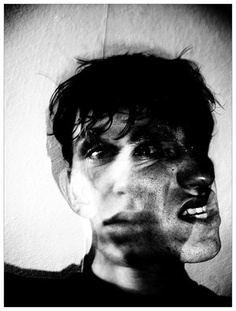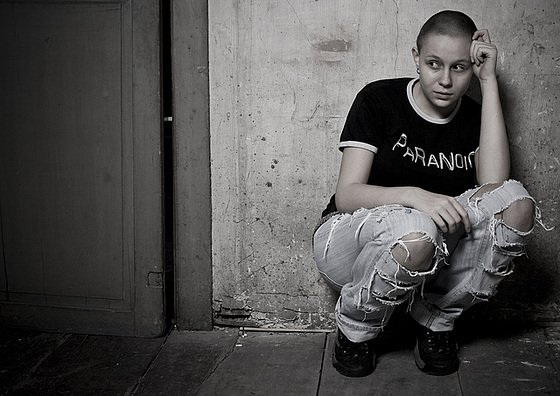| |
 |
|
John Nash, a U.S. mathematician and joint winner of
the 1994 Nobel Prize for Economics, who had
Schizophrenia.
His life was the subject of the 2001
Academy Award-winning film A Beautiful Mind. |
Schizophrenia is diagnosed based on criteria in
either the American Psychiatric Association’s fifth
edition of the Diagnostic or Statistical Manual of
Mental Disorders (DSM 5), or the World Health
Organization's International Statistical
Classification of Diseases and Related Health
Problems, the ICD-10. These criteria use the
self-reported experiences of the person and reported
abnormalities in behavior, followed by a clinical
assessment by a mental health professional. Symptoms
associated with Schizophrenia occur along a
continuum in the population and must reach a certain
severity before a diagnosis is made. As of 2013
there is no objective test.
 |
|
Criteria
In 2013, the American Psychiatric Association
released the fifth edition of the DSM (DSM 5). The
broad definition of Schizophrenia was not changed,
but DSM 5:
1. eliminates the classic subtypes of Schizophrenia,
2. adds new psychopathological dimensions,
3. clarifies cross-sectional and longitudinal course
specifiers,
4. eliminates special treatment of Schneider's
first-rank symptoms,
5. more clearly defines the distinction between
Schizophrenia and schizoaffective disorder, and
6. Clarifies the relationship between Schizophrenia
and catatonia.
In the older, fourth revised edition of the DSM
(DSM-IV-TR), to be diagnosed with Schizophrenia,
three diagnostic
|
criteria had to be met:
1. Characteristic symptoms: Two or more of the
following, each present for much of the time during
a one-month period (or less, if symptoms remitted
with treatment)
-
Delusions
-
Hallucinations
-
Disorganized speech, which is a manifestation of
formal thought disorder
-
Grossly disorganized behavior (e.g. dressing
inappropriately, crying frequently) or catatonic
behavior
-
Negative symptoms: Blunted affect (lack or decline
in emotional response), alogia (lack or decline in
speech), or avolition (lack or decline in
motivation)
|
| |
If the delusions are judged to be bizarre, or
hallucinations consist of hearing one voice
participating in a running commentary of the
person's actions or of hearing two or more voices
conversing with each other, only that symptom is
required above. The speech disorganization criterion
is only met if it is severe enough to substantially
impair communication.
2. Social or occupational dysfunction: For a
significant portion of the time since the onset of
the disturbance, one or more major areas of
functioning such as work, interpersonal relations,
or self-care, are markedly below the level achieved
prior to the onset.
3. Significant duration: Continuous signs of the
disturbance persist for at least six months. This
six-month period must include at least one month of
symptoms (or less, if symptoms remitted with
treatment).
The ICD-10 criteria are typically used in European
countries, while the DSM-IV-TR criteria are used in
the United States and to varying degrees around the
world, and are prevailing in research studies. The
ICD-10 criteria put more emphasis on Schneiderian
first-rank symptoms. In practice, agreement between
the two systems is high.
|
|
 |
If signs of disturbance are present for more than a
month but less than six months, the diagnosis of
schizophreniform disorder is applied. Psychotic
symptoms lasting less than a month may be diagnosed
as brief psychotic disorder, and various conditions
may be classed as psychotic disorder not otherwise
specified. Schizophrenia cannot be diagnosed if
symptoms of mood disorder are substantially present
(although schizoaffective disorder could be
diagnosed), or if symptoms of pervasive
developmental disorder are present unless prominent
delusions or hallucinations are also present, or if
the symptoms are the direct physiological result of
a general medical condition or a substance, such as
abuse of a drug or medication.
Diagnosis of Subtypes
 |
|
The DSM-IV-TR contains five sub-classifications of
Schizophrenia, although the developers of DSM 5 are
recommending they be dropped from the new
Delusions or auditory
hallucinations are present, but thought disorder,
disorganized behavior, or affective flattening is
not. Delusions are persecutory and/or grandiose, but
in addition to these, other themes such as jealousy,
religiosity, or somatization may also be present.
(DSM code 295.3/ICD code F20.0)
Named hebephrenic Schizophrenia
in the ICD. Where thought disorder and flat affect
are present together. (DSM code 295.1/ICD code
F20.1) |
| |
The subject may be almost immobile
or exhibit agitated purposeless movement. Symptoms
can include catatonic stupor and waxy flexibility.
(DSM code 295.2/ICD code F20.2)
Psychotic symptoms are
present but the criteria for paranoid, disorganized,
or catatonic types have not been met. (DSM code
295.9/ICD code F20.3)
Where positive symptoms are present
at a low intensity only. (DSM code 295.6/ICD code
F20.5) |
|
 |
The ICD-10 defines two additional subtypes:
A depressive
episode arising in the aftermath of a schizophrenic
illness where some low-level schizophrenic symptoms
may still be present. (ICD code F20.4)
Insidious and progressive
development of prominent negative symptoms with no
history of psychotic episodes. (ICD code F20.6)
Psychotic symptoms may be present in several other
mental disorders, including bipolar disorder,
borderline personality disorder, drug intoxication
and drug-induced psychosis. Delusions
("non-bizarre") are also present in delusional
disorder, and social withdrawal in social anxiety
disorder, avoidant personality disorder and
schizotypal personality disorder. Schizotypal
personality disorder has symptoms that are similar
but less severe than those of Schizophrenia.
Schizophrenia occurs along with obsessive-compulsive
disorder (OCD) considerably more often than could be
explained by chance, although it can be difficult to
distinguish obsessions that occur in OCD from the
delusions of Schizophrenia. A small number of people
withdrawing from benzodiazepines experience a severe
protracted withdrawal syndrome which can resemble
Schizophrenia and be misdiagnosed as such.
A more general medical and neurological examination
may be needed to rule out medical illnesses which
may rarely produce psychotic Schizophrenia-like
symptoms, such as metabolic disturbance, systemic
infection, syphilis, HIV infection, epilepsy, and
brain lesions. Stroke, multiple sclerosis,
hyperthyroidism, hypothyroidism and dementias such
as Alzheimer's disease, Huntington's disease,
frontotemporal dementia and Lewy Body dementia may
also be associated with Schizophrenia-like psychotic
symptoms. It may be necessary to rule out a
delirium, which can be distinguished by visual
hallucinations; acute onset and fluctuating level of
consciousness, and indicates an underlying medical
illness. Investigations are not generally repeated
for relapse unless there is a specific medical
indication or possible adverse effects from
antipsychotic medication. In children hallucinations
must be separated from normal childhood fantasies.
There is no single laboratory or brain imaging test
for Schizophrenia. Treatment professionals must rule
out multiple factors such as brain tumors, possible
medical conditions and other psychiatric diagnoses,
such as bipolar disorder.
Individuals with Schizophrenia have two or more of
the following symptoms occurring persistently.
However, delusions or hallucinations alone can often
be enough to lead to a diagnosis of Schizophrenia.
Positive symptoms are also known as “psychotic”
symptoms because the person has lost touch with
reality in certain ways.
-
Delusions or the belief in things not real or
true.
-
Hallucinations are hearing or seeing things that
are not real.
-
Disorganized speech expressed as an inability to
generate a logical sequence of ideas.
-
Negative symptoms refer to a reduction of a
capacity, such as motivation.
-
Emotional flatness or lack of expressiveness.
-
Inability to start and follow through with
activities.
-
Lack of pleasure or interest in life.
-
Cognitive symptoms pertain to thinking processes.
-
Trouble with prioritizing tasks, memory and
organizing thoughts.
-
Anosognosia or “lack of insight” being unaware of
having an illness.
-
A diagnosis of Schizophrenia is made based on a full
psychiatric evaluation, medical history, physical
exam, and lab tests.
|
The doctor or psychiatrist
will ask a series of questions about you or your
loved one's symptoms, psychiatric history, and
family history of mental health problems.
Your doctor will ask
about your personal and family health history. He or
she will also perform a complete physical
examination to check for medical issues that could
be causing or contributing to the problem.
While there are no laboratory
tests that can diagnose Schizophrenia, simple blood
and urine tests can rule out other medical causes of
symptoms. The doctor may also order brain-imaging
studies, such as an MRI or a CT scan, in order to
look for brain abnormalities associated with
Schizophrenia.
 |
|
The presence of two or more of the following
symptoms for at least 30 days:
1. Hallucinations
2. Delusions
3. Disorganized speech
4. Disorganized or catatonic behavior
5. Negative symptoms (emotional flatness, apathy,
lack of speech)
Significant problems functioning at work or
school, relating to other people, and taking care of
oneself.
Continuous signs of Schizophrenia for at least 6
months, with active symptoms (hallucinations,
delusions, etc.) for at least 1 month.
No other mental health disorder, medical issue, or
substance abuse problem is causing the symptoms. |
|
|

